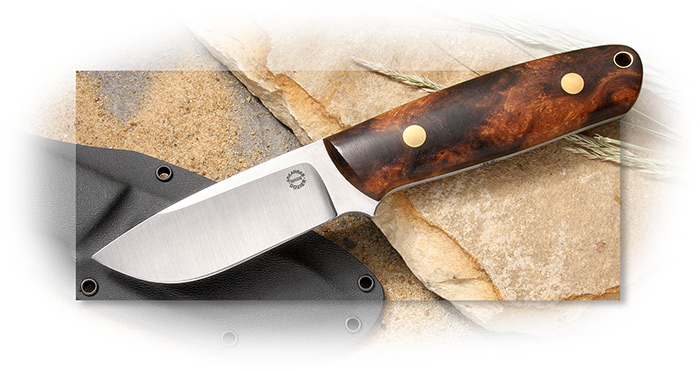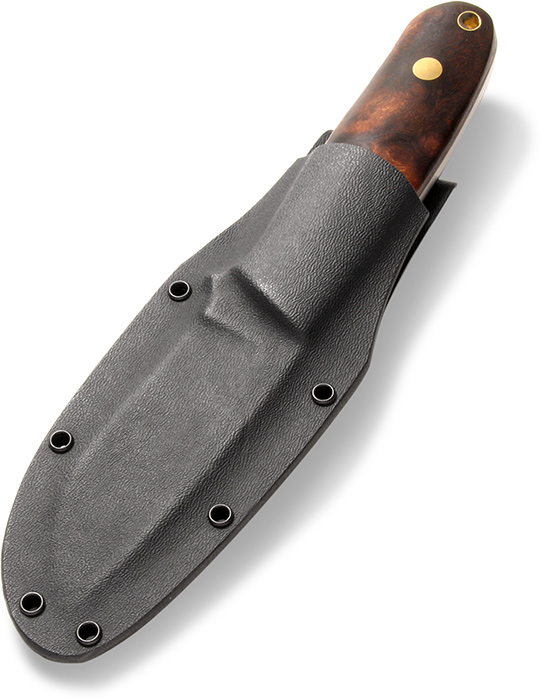Arkansas Made Dozier Master Skinner Desert Ironwood
Item #: DK-K21DIV
$395.00
The Dozier Master Skinner has taken the drop point blade beyond beyond what Bob Loveless imagined. It is a knife suited to the skinning of any animal on this or any other continent. The 3-1/2" by 1-1/8" blade of D2 at 60-61 Rc. will flay everything from a small whitetail to a 20-foot saltwater croc with the same ease and will hold an edge beyond your experience. Bob Dozier's personal heat-treat of D2 has become legendary among knife aficionados (those of us who love knives and great edge holding). This blade has a great skinning curve beneath the classic drop point and a satin finish well suited to the use the knife can expect. The handle has the ergonomic, "shaped for use" contours you would expect from Bob Dozier. It is not intended for those with small hands, this knife is truly "Man-Sized". The handle scales are Desert Ironwood from the American Southwest. Measures 8" overall. Weighs 6.4 oz. Includes a vertical Kydex® sheath which allows it to be carried safely in front of the hip. Handmade in Springdale, Arkansas.
(8-2020) If a Dozier knife is not on our shelves when you order, delivery is currently taking 3 to 4 months.
-
TypeFixed
-
BladeDrop Point
-
Blade Length3-1/2"
-
Blade SteelD2
-
Rockwell60-61
-
HandleDesert Ironwood
-
TangFull
-
Overall Length8"
-
Weight6.4 oz.
-
SheathKydex
-
OriginUSA
Arkansas Made Dozier
Bob Dozier made his first knives when he was only twelve or thirteen years old. He told me the other day that after those few knives, he did not make another until he was about twenty-three and working as a rough neck in the oil fields in Louisiana. He talked about that first simple knife and then told a story about a co-worker asking to come to watch him make knives. Bob had made several knives by then and had created a small rough shop. He said the man stayed and watched until the knife was finished which took most of the day. When it was finished, he asked to look at it. After handling it for a while, he asked Bob how much he wanted for it. Without giving it any thought, Bob says he said $12.50. The man pulled out twelve one dollar bills and two quarters, laid them on the bench, got in his truck and left. Bob went in the house and told his wife he had just sold a knife which took him most of the day to make for $12.50. But, he told me, at that moment he knew he was going to be a knifemaker. That was about 1963.
If you had the opportunity to look through Bob’s collection of his old knives, you would find that he has made many different kinds of knives; hunters, Bowies and fighters, and more recently folders. You can definitely see a relationship between a pair of fighting knives he made in those early years and the practical, utilitarian fighters that began to appear from handmade knifemakers and knife manufactures from the late 1960s and became tremendously popular during the Viet Nam War era. These knives used to be called fighting knives. Today they are called Tactical Knives.


